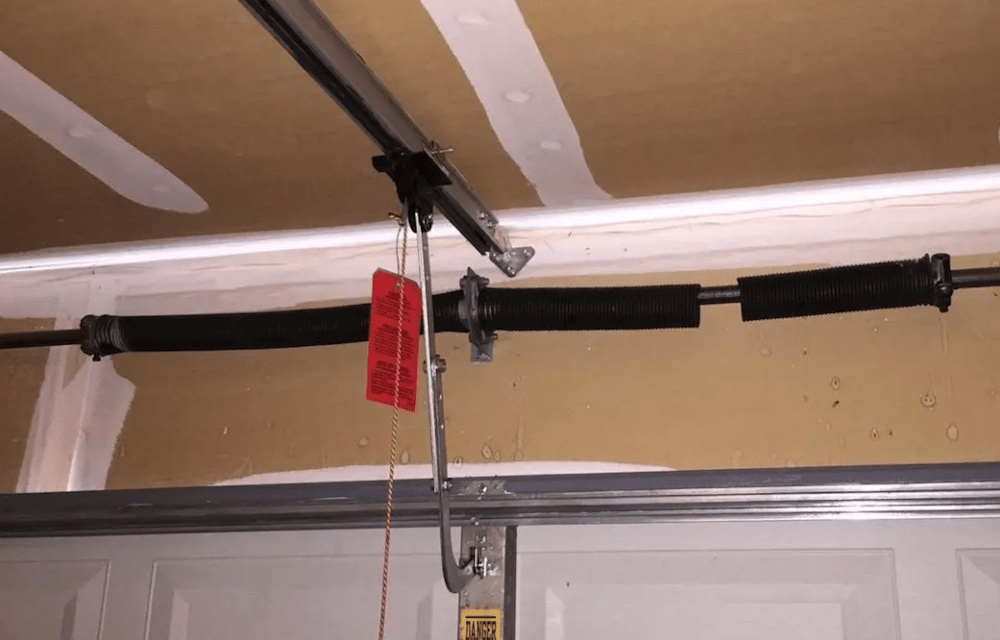Have you ever found yourself in a situation where your garage door springs suddenly break, leaving you stranded with a seemingly immovable barrier? It’s a scenario that many homeowners dread, but fear not! In this guide, we will explore the ins and outs of dealing with a broken garage door spring and, most importantly, how to open your garage door when spring breaks unexpectedly. Discover the essential steps to tackle this common issue and regain control over your garage access effortlessly.

Understanding the Challenge: When Garage Door Springs Break
Garage door springs play a pivotal role in the smooth operation of your garage door. They counterbalance the weight of the door, making it easy to open and close. However, these springs are not immune to wear and tear, and when they break, it can cause a considerable inconvenience. Before we delve into the solution, let’s briefly discuss why garage door springs break and the signs that indicate a broken spring.
Why Do Garage Door Springs Break?
Garage door springs break for various reasons, including prolonged usage, exposure to extreme temperatures, and general wear. Rust and corrosion can also weaken the springs over time, leading to sudden failure. It’s essential to recognize the signs of a broken spring, such as loud snapping noises, uneven opening, or the door appearing heavier than usual.
How To Open Garage Door When Spring Breaks: A Step-by-Step Guide
Dealing with a broken garage door spring doesn’t have to be a daunting task. By following these simple steps, you can safely and effectively open your garage door, even when the spring is no longer in working condition.
Step 1: Assess the Situation
When you discover that your garage door spring has broken, take a moment to assess the situation. Look for any visible signs of damage, such as a hanging or misaligned spring. Ensure that the area around the garage door is clear of any obstacles.
Step 2: Disconnect the Garage Door Opener
To prevent any further damage or strain on the garage door opener, disconnect it from the power source. This will allow you to operate the door manually without causing additional stress on the opener mechanism.
Step 3: Locate the Emergency Release Cord
Most garage doors are equipped with an emergency release cord that allows you to disengage the door from the opener. Find the cord, usually hanging from the opener rail, and pull it down. This action will release the door from the opener carriage, enabling you to operate it manually.
Step 4: Lift the Door Manually
Once the door is disengaged from the opener, carefully lift it manually. Be cautious of the door’s weight, as it may be heavier without the assistance of the springs. Enlist the help of another person if needed, and lift the door slowly and steadily.
Step 5: Secure the Door in the Open Position
After successfully lifting the garage door, secure it in the open position by propping it up with a sturdy object. This step is crucial to ensure your safety and prevent the door from unexpectedly closing while you are inside the garage.
Step 6: Seek Professional Repair
While the above steps provide a temporary solution to open your garage door, it’s essential to seek professional repair for the broken spring. Attempting to replace the spring without the necessary expertise can lead to further damage or injury. Contact a reputable garage door repair service to assess the extent of the damage and provide a permanent solution.
Conclusion: Taking Control When Spring Breaks
Encountering a broken garage door spring can be a frustrating experience, but with the right knowledge, you can navigate the situation smoothly. By understanding the reasons behind spring breaks and following a step-by-step guide on how to open your garage door manually, you can regain control over your garage access. Remember, while temporary solutions are valuable, seeking professional repair ensures a long-term fix and prevents future complications. Stay informed, stay safe, and take charge of your garage door even when spring decides to break free.



Leave a Reply